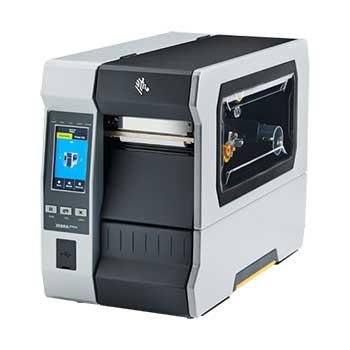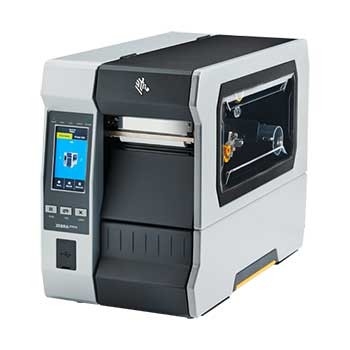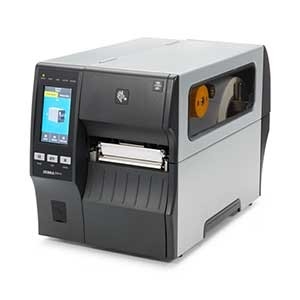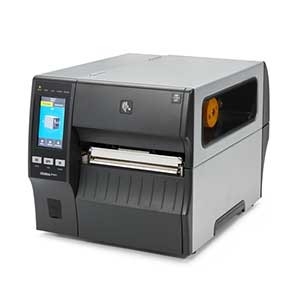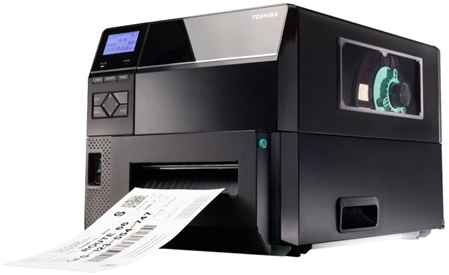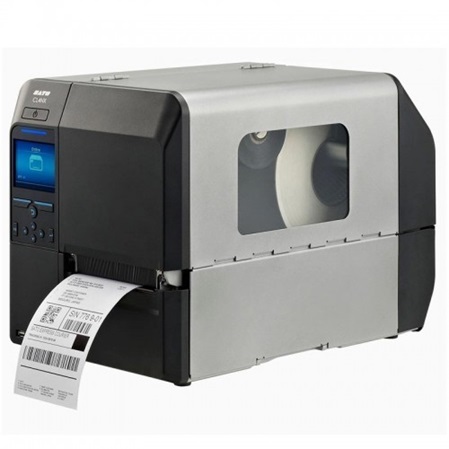What is RFID?
The abbreviation RFID comes from the English term "radio-frequency identification". Translated into German, this expression means "radio frequency identification" or "radio frequency identification". This means that with the help of RFID solutions, data can be transmitted completely automatically using electromagnetic waves.
RFID technology does not rely on visual contact or touch to read and write data records. Instead, induction-based data collection uses RFID transponders that are equipped with an identifier on a computer chip.
Furthermore, a distinction must be made between the individual transponders. A distinction is made between passive and active RFID transponders. The passive chip obtains its energy from external radio waves. It is budget-friendly, which is why it loses range and storage space.
In contrast, active RFID chips are in a higher price range. They impress with a long range and lots of storage space. In addition, they are powered by a small battery.
Significance and origins
In fact, the roots of RFID technology go back to the Second World War. At that time, British pilots resorted to tags or transponders in fighter planes. They were intended to help soldiers distinguish friend from foe. The transponders were connected to the ground station. However, they had very little in common with today's RFID tags.
The technology continued to develop and from the 1960s onwards, the forerunners of today's RFID chips were finally used in the civilian sector. They secured goods against theft by checking the current stock.
Later in history, RFID systems found their way into agriculture. RFID tagging helped to identify animals. In the following years, RFID transponders were integrated into toll systems, made it easier to track data and work around access control systems - such as immobilisers or ski passes - and fuel cards.
How RFID technology works
Behind RFID technology lies a simple but ingenious system. The integrated transponder is equipped with a code that is decoded by the reader using radio waves. An electromagnetic signal is then transmitted, which is picked up by the antenna of the transponder and transferred to the microchip. The signal is then adapted and transferred to the reader.
This process takes place within a few milliseconds. The reading range of the device depends on the type of transponder, which can have different frequency ranges:
- low Frequency Range (LF RFID): 125 kHz
- high Frequency range (HF RFID): 13.56 MHz
- ultra High Frequency (UHF RFID): 868 MHz
Benefits of RFID in supply chain management and logistics
RFID technology is becoming increasingly popular, thanks to some powerful arguments:
- free of charge: There are no costs for the procedure, as the amount of data is transmitted by means of radio antennas. The reader and the transponder do not have to be in sight and physical contact is not necessary either. The radio waves penetrate a wide range of materials.
- fast: Data capture and transmission is done in a few fractions of a second.
- efficient: RFID readers are able to read several RFID transponders at the same time.
- error-free: RFID tags have an initial read rate of up to 100 percent. with certain RFID systems, faulty tags can also be read.
- secure: For data protection purposes, sensitive information is encrypted.
- insensitive: Neither temperature fluctuations nor humidity have any effect on the functionality of RFID tags.
- reusable: An RFID chip can be added to or adapted at a later date.
- invisible: RFID chips can be easily integrated into almost all labels.
Further benefits of RFID are:
- improvement of logistical processes
- high compatibility
- high reliability and product quality
- exclusion of manipulation
- transparency
- reduced workload
RFID printers complement the barcode in logistics
While the barcode is mainly represented in retail, RFID labels and barcodes are both used in logistics. Because nowadays it is actually no longer possible to capture the almost infinite amount of data with barcodes alone. For this reason, barcodes are now increasingly being supplemented by RFID tags in companies.
RFID vs. barcode - the comparison
Barcodes are efficient and are an incredible labour-saver. Nevertheless, this type of label compares poorly with RFID. It turns out that, unlike conventional automatic identification systems, RFID systems are easy to use, have a pulse reading capability and are characterised by a high data density.
Furthermore, unauthorised copying of the data is almost impossible and RFID tags are also very resistant. While barcode data transmission becomes impossible in poor lighting conditions, illegibility or due to the influence of dirt and moisture, RFID technology continues to function perfectly.
It should be mentioned, however, that this helpful innovation also has its weak points. This is because the customer is not in a position to manufacture the identification system himself and the acquisition costs are also much higher than with the barcode.
RFID printer with an RFID encoder module
RFID label printers are comparable to conventional printers. However, they have an RFID encoder module to provide RFID labels with reliable and high-quality ink or thermal printing. The special feature of this type of printer is that information is also transferred to the RFID transponder.
What should be considered when choosing an RFID printer?
More and more suppliers are specialising in RFID label printers. RFID label printers are characterised by various features and special features. For this reason, it is advisable to consider some purchasing criteria when choosing the right device.
The intended use determines the choice of RFID printer
As already mentioned, transponders are categorised according to their frequency. RFID printers that operate at low and high frequencies can only bridge short distances. They can be used to check access authorisations and are passive in nature.
In goods management, UHF transponders are used. They are very effective and their range extends over several hundred metres. The active transponders are therefore also suitable for the identification of containers at ports, airports or freight stations.
Since RFID printers are usually designed for one frequency only, you should think carefully about which model is suitable for your own area of application. It should also be mentioned that errors can creep in despite apparent compatibility between printer and RFID label.
Applications for RFID printer technology
It is impossible to imagine today's global economy without RFID printers. They are an essential part of countless sectors and make everyday work easier. Their uses and applications are manifold:
- anti-theft in retail through RFID tags
- identification of packaging, goods, machines and shelves in logistics
- facilitating access control at airports, in hotels and at public authorities
- identification of pets and livestock
- warehouse management
- use in contactless time clocks for time recording
- protection against imitations in the pharmaceutical industry
- traceability of data
- support of hygiene management in medicine
- production control in industrial manufacturing
- inventory management for stocktaking
Zebra ZT610R
ZT600 Series printers combine industrial durability and user-friendly features with future-proof adaptability — including a factory- or field-installable RFID encoder — to meet your evolving needs for years to come. Gain greater visibility of your printing systems with Link-OS applications and managed operational and asset visibility services (OVS/AVS), plus the ability to deepen your insight into your entire business with advanced RFID printing and encoding.Zebra ZT610R LM/FM - modified by DE
The FM (Full modification) variant of the ZT610R has been development for using On-Metal Labels. These labels are able to be placed upon metallic surfaces (normal labels will not work on metallic surfaces) and are specifically designed for this use case. The FM model of ZT610R is the only printer model we know that is capable of printing all commonly used On-Metal labels in the industry. This variant is successor of our established R110Xi4 FM variant, which Data Elektronik developed during start of the world-wide first transparent prototype together with Porsche and MHP.
Zebra ZT411R
Drive productivity with the ZT400 Series RFID. Loaded with advanced features and connectivity options, these printers/encoders accurately and efficiently produce labels for all your mid- to high-volume item-level tracking applications. The ZT411 RFID, available in an on-metal version*, is the only dedicated option for printing and encoding on-metal tags. And, with Zebra’s Print DNA suite of applications, utilities and developer tools—all powered by Link-OS®—they’re easy to integrate, manage and maintain from any location.Zebra ZT421R
Drive productivity with the ZT400 Series RFID. Loaded with advanced features and connectivity options, these printers/encoders accurately and efficiently produce labels for all your mid- to high-volume item-level tracking applications. The ZT411 RFID, available in an on-metal version*, is the only dedicated option for printing and encoding on-metal tags. And, with Zebra’s Print DNA suite of applications, utilities and developer tools—all powered by Link-OS®—they’re easy to integrate, manage and maintain from any location.Toshiba B-EX6T1
The Toshiba B-EX6 series — redefining the Industrial printer marketplace. Combining market leading technology with usability, reliability and the lowest total cost of ownership. Extending the capabilities of our existing range of B-EX printers to cover the most demanding applications, for heavy duty industrial printing. Rugged and durable design, advanced functionality, cost saving features and a wide choice of models and options for the best “all-in-one” industrial solution.SATO CL4NX
Optimise print precision, increase printing speeds and expand operational capability with the next-generation CL4NX Plus industrial printer from SATO.
The innovative label printer represents the cutting-edge evolution of SATO industrial thermal printers, which present a complement of consistent practical benefits, designed to integrate seamlessly into existing workflows.
Didn't find your product?
We deliver thousands of items and only show case a few selected products for given categories.
We are happy to help you find your specific product and can create you a quotation.


